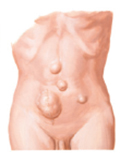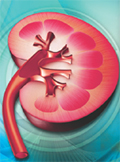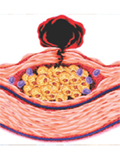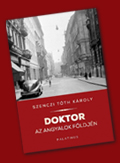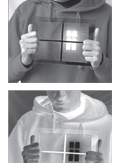The eLitMed.hu medical portal uses computer cookies for convenient operation. Detailed information can be found in the Cookie-policy.
Lege Artis Medicinae - 2015;25(06-07)
Content
[Incisional hernia and diabetes. Could we improve the results?]
[GOALS - Diabetes mellitus is considered as a risk factor concerning surgical interventions as well. Connection between incisional abdominal hernias and diabetes mellitus were investigated in this prospective four years study. The primary aim was to evaluate the proportion of recurrencies, the secondary aim was determining the ratio of surgical complications in the investigated two groups (Group I: non diabetic, group II: diabetic patients). PATIENTS AND METHOD - The results of the incisional and abdominal hernia operations performed between 01. 01. 2011. and 31. 12. 2014. were investigated. Data for study was gained from the consecutively and obligatorily registered database of the authors’ institution. The type of reconstruction, elective or acute character of surgery, primary or recidive operation, the patients’ body mass index (BMI), as well as among complications the seroma and fistula formations, the reoperations and postoperative infections were registered. Patients with type I and type II diabetes mellitus were not differentiated. The HgbA1c was investigated separately in elective and acute operations. RESULTS - There were 56 (8.94%) diabetic patients (39 male, 17 women, avr. age 54.3 years) out of all 626 patients operated on incisional and/or abdominals wall hernias. Total recurrency rate was 19.6% during the average 32 months (6-66 months) follow-up period. The recurrency rate in diabetic patients was 50.0% (48.7% in women, 52.9% in men). Non-diabetic patients’ recurrency ratio were only 8.3% (11.2% and 5.4% in men and women, respectively). Median BMI is significantly higher in patients with diabetes than in those of non diabetics (35.4kg/m2 vs 27.75kg/2). Ratio of the elective and acute operations were 69.6% and 28.6%, respectively. The most frequently used operations technique was the direct transversal abdominal wall suture (14.3%) and the direct suture plus synthetic mesh implantation (64.3%). Eleven (19.7%) diabetic patients with incisional hernia were reconstructed with a so-called autologous tension free dermal flap. In 2 (18.2%) out of 11 patients were registered recurrency. Seroma and haematoma formation was occured in four patient (36.4%) and in one (9.1%), respectively after dermal flap reconstructions. Mean recurrency time after surgery in non-diabetic and in diabetic patients was 12.3 months and 9.2 months, respectively. The average HgbA1c level was significantly higher (8.1% in electively operated patients than in those acutly operated ones (9.8%). There were two lethal (0.36%) postoperative complications in this study. CONCLUSION - Considering the recurrency ratio of the incisional hernias and the postoperative complications, diabetes mellitus is a significant risk factor compared the data to non-diabetic patients. Seroma and haematoma formations, postoperative complications ratio are significantly higher in patients with diabetes than in those of non-diabetic. Appearance of recurrencies require significantly shorter time in patients with diabetes mellitus The rate of recidive and postoperative complication after the autolog, dermal, traction free abdominal wall reconstructions made by authors was lower, than in abdominal hernias reconstructed in other ways (direct suture, direct suture plus xenograft).]
[Effect of mycophenolate sodium therapy on quality of life of renal transplant patients]
[Enteric-coated mycophenolate sodium (EC-MPS; Myfortic®, Novartis Pharma AG, Basel, Switzerland) is an enteric-coated formulation delivering MPA. Enteric-coated MPS has been developed with the aim of improving the upper GI tolerability of MPA while providing a therapeutical equivalence. The primary objective of the study was to measure the quality of life of kidney transplant patients, with special attention to gastrointestinal symptoms during mycophenolate sodium therapy. The secondary objective was to measure the mean daily mycophenolate sodium dose during routine therapy. These two parameters can significantly influence long-term graft survival of the patients. The study was a multicentric, non-interventional, 12 weeks, single arm, cohort, observational study, in which 251 adult, kidney transplant patients were enrolled in 4 study centers. As part of the study, the patient completed a questionnaire to assess the gastrointestinal status: the Gastrointestinal Symptom Rating Scale (GSRS). The patient’s average age was 51.03 years by the time of the inclusion. 61% of the patients were male and 39% female. Kidney transplant was performed averagely 6.3 years (SD: 4.3 years) prior to the screening visit. At the first visit the average intensity of gastrointestinal side effects was 0.87, at the final visit was 0.28. The change of the average number of gastrointestinal side effects between the first and last visit was examined by Wilcoxon test, and it was significant (p<0.0001). Patients had to complete the GSRS questionnaire aiming at five gastrointestinal symptom groups. In all five symptom-groups significant (p<0.0001) improvement was observed between the visits. Our results support that, in renal transplant patients with gastrointestinal undesirable effects due to MMF, using enteric-coated mycophenolate sodium may increase the maximum tolerated dose of MPA and reduce GI disorders.]
[Treatment of chronic Pseudomonas aeruginosa lung infections in cystic fibrosis with inhaled tobramycin]
[BACKGROUND - Intermittent or chronic pulmonary infections caused by Pseudomonas aeruginosa (Pa) deteriorate clinical status and worsen lung function in patients with cystic fibrosis (CF). The prognosis of the disease and life expectancy of patients are substantially dependent on lung infections and inflammation; therefore the primary goal of the treatment is the early termination of the infection. PATIENTS AND METHODS - Efficacy of tobramycin (TOBI® 300 mg/5 mL solution for inhalation, henceforth TOBI®) inhalation in Pa pulmonary infections was studied in a non-interventional, observational, open-label, single-arm trial in subjects with CF. Fifty-three patients aged six to 31 years (averaged 15.8 years) were enrolled into the study. Three treatment cycles of TOBI® inhalation (28 days on drug, 28 days off drug) plus 6 months observational period were evaluated. Primary endpoint was changing in the predictive values of forced expiratory volume in 1 sec (FEV1) compared to the initial values after three cycles of the treatment. Secondary endpoints were changing in the FEV1 predictive values at the end of the complete study compared to the initial values; ratios of patients with decreased density of originally Pa-positive result of sputum culture; as well as safety and tolerability of the TOBI® treatment. RESULTS - FEV1 and FEV1% results were unchanged comparing to the initial values at the end of the treatment and after the observational period in the whole study population. However, sputum cultures became negative in 47.2% of all subjects as a result of the treatment, and the FEV1 values were gradually increased in these patients: after the third treatment cycle plus 160 mL, and at the end of the study plus 110 mL comparing to the initial values. Similar considerable increase was detected in the predictive FEV1% in this sub-group: after the first cycle plus 5.2%, at the end of third cycle plus 7%, after the observational period above 3.8% considering the starting results. CONCLUSIONS - TOBI® inhalation proved to be effective in improvement of lung function results and eradication of infection in our patients with Pa positive CF. The treatment was well tolerated and safe.]
[Efficacy of maximal dose rosuvastatin therapy in significant carotis stenosis]
[The main role of atherogenic dyslipidemia is known for decades. Several studies have proven the beneficial effect of statin therapy on cardiovascular morbidity and mortality. The following case report demonstrates the efficacy of high dose statin therapy regarding lipid goals and clinical signs. The presented 65 year-old female patient had a history of dyslipidemia and hypertension for over 15 years and positive cardiovascular family history. Carotid ultrasound examination showed 15-20% bilateral stenosis in 2008 whereas four years later, control ultrasound showed significant progression with 65% left-sided asymptomatic stenosis. At this time, LDL-cholesterol level was above the target; we managed to reach the recommended level with high-dose statin treatment in combination therapy with ezetimibe. Besides the lipid levels, regression of the carotid stenosis could be observed without statin-associated side effects.]
[New opportunities for the estimation of health loss in Hungary]
[BACKGROUND - The Global Burden of Disease Study has been publishing its reports since the early 1990’s. The last one from 2010 covers 291 diseases, and 67 risk factors for 187 countries. AIMS - Presenting examples of the Hungarian health burden status the authors advocate the use this unique data source. METHODS - The authors downloaded the 1990 and 2010 data for Hungary from the Global Burden of Disease Study website. To quantify the economic burden they calculated the change in GDP related to the absence from work as a consequence of risks and diseases. RESULTS - In the publication the authors presented some of the versatile utilization methods of the GBD data and the data visualization tools available on GDB’s website. In 2010 the DALY for Hungary was 3,714,900 years which is the 84% of the country’s DALY in 1990. The most Years Lived by Disability was caused by musculoskeletal disorders (YLD: 28.4%), while cardiovascular and circulatory diseases caused the most Years of Life Lost (YLL: 40.3%). In 2010 the dietary risk was the leading risk factors in Hungary accountable for 840 thousand of life years lost which economic cost was over 950 milliard Hungarian forints. CONCLUSIONS - The use of the result provided by the Global Burden of Disease Study can significantly contribute for planning and evaluating interventions to promote healthy lifestyle, to advance supporting living conditions, and to distribute health care capacity efficiently.]
1.
Clinical Neuroscience
Is there any difference in mortality rates of atrial fibrillation detected before or after ischemic stroke?2.
Clinical Neuroscience
Factors influencing the level of stigma in Parkinson’s disease in western Turkey3.
Clinical Neuroscience
Neuropathic pain and mood disorders in earthquake survivors with peripheral nerve injuries4.
Journal of Nursing Theory and Practice
[Correlations of Sarcopenia, Frailty, Falls and Social Isolation – A Literature Review in the Light of Swedish Statistics]5.
Clinical Neuroscience
[Comparison of pain intensity measurements among patients with low-back pain]1.
Clinical Neuroscience Proceedings
[A Magyar Stroke Társaság XVIII. Kongresszusa és a Magyar Neuroszonológiai Társaság XV. Konferenciája. Absztraktfüzet]2.
3.
Journal of Nursing Theory and Practice
[A selection of the entries submitted to the literary contest "Honorable mission: the joys and challenges of our profession" ]4.
Journal of Nursing Theory and Practice
[End of Life and Palliative Care of Newborns in the Nursing Context]5.
Journal of Nursing Theory and Practice
[Aspects of Occupational Health Nursing for Incurable Patients ]



